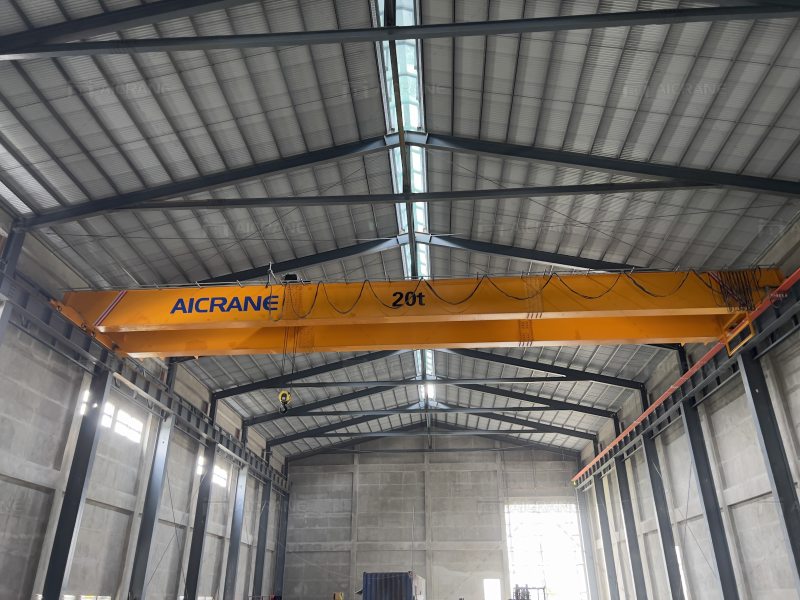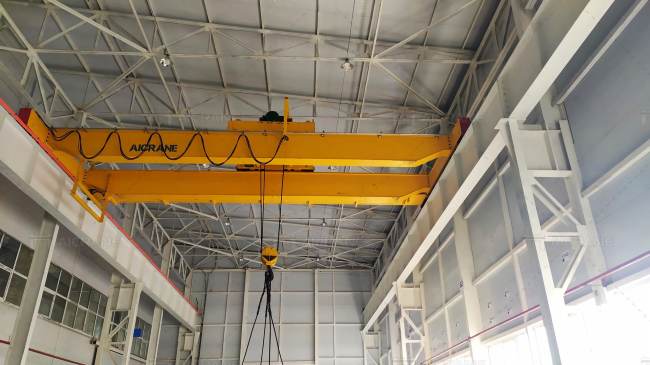Double girder overhead cranes are indispensable in heavy-duty lifting applications across various industries, including manufacturing, construction, and logistics. These cranes are designed to handle substantial loads and provide exceptional stability and precision. Integrating remote control systems into double girder overhead cranes enhances their functionality, offering numerous benefits that improve operational efficiency, safety, and overall performance. This article explores the advantages of remote control systems for double girder overhead cranes and how they contribute to modern industrial operations.
Enhanced Operational Efficiency
Remote control systems significantly enhance the operational efficiency of double girder overhead cranes by providing operators with greater flexibility and control. With a remote control system, operators can manage crane functions from a distance, allowing them to oversee the entire lifting and moving process without being confined to a control cabin or fixed position. This flexibility enables smoother coordination with other equipment and personnel, streamlining operations and reducing delays.

a. Improved Maneuverability
Remote controls allow operators to maneuver the crane more precisely and swiftly. Operators can adjust the crane’s movements in real-time, ensuring accurate positioning of loads. This improved maneuverability is especially beneficial in complex or congested environments where precise control is necessary to avoid obstacles and ensure the safe placement of materials.
b. Faster Response Times
The ability to control the crane remotely means operators can respond quickly to changing conditions or unexpected situations. Whether it’s adjusting the crane’s position or pausing operations to address issues, remote control systems facilitate rapid adjustments, enhancing overall productivity and reducing downtime.
Increased Safety
Safety is a critical concern in industrial environments, particularly when handling heavy loads with double girder heavy duty overhead cranes. Remote control systems contribute to a safer working environment by reducing the risk of accidents and injuries.
a. Reduced Operator Exposure
With remote control systems, operators can manage crane functions from a safe distance, away from the load and potential hazards. This reduces their exposure to dangerous conditions and minimizes the risk of accidents. For instance, operators can remain at a safe distance from moving loads or hazardous areas, enhancing personal safety.
b. Enhanced Visibility
Remote control systems often come with features such as cameras and sensors that provide operators with a clear view of the crane’s surroundings. These visual aids improve situational awareness and help operators make informed decisions, reducing the likelihood of collisions or accidents.
c. Remote Emergency Stop
In case of emergencies, remote control systems include an emergency stop function that allows operators to quickly halt overhead crane operations from a distance. This capability is crucial for preventing accidents and addressing unexpected issues promptly.
Operational Flexibility
Remote control systems offer a high degree of flexibility, allowing cranes to be used in a variety of settings and applications. This flexibility is particularly valuable in industries where cranes need to operate in diverse and dynamic environments.
a. Adaptability to Different Tasks
Remote controls enable operators to adjust crane settings and functions based on specific tasks or materials being handled. This adaptability is beneficial for performing a range of operations, from lifting heavy equipment to handling delicate materials, with the same crane.
b. Ease of Use in Confined Spaces
In environments with limited space or complex layouts, remote control systems provide operators with the ability to maneuver the crane effectively without being physically present in the control area. This ease of use in confined spaces enhances operational capabilities and allows cranes to be utilized in challenging environments. If you want to know different overhead crane types introduction, you can open this page https://aicranemachine.com/overhead-crane/types/.

Improved Maintenance and Diagnostics
Remote control systems contribute to better maintenance practices and diagnostics, ensuring that double girder overhead cranes remain in optimal working condition.
a. Remote Monitoring
Modern remote control systems often include remote monitoring features that allow operators and maintenance personnel to track the crane’s performance and operational status from a distance. This capability helps in identifying potential issues before they escalate, enabling proactive maintenance and reducing the risk of unexpected breakdowns.
b. Diagnostic Tools
Remote control systems come equipped with diagnostic tools that provide real-time data on the crane’s performance. This data can be analyzed to detect anomalies or wear and tear, facilitating timely repairs and maintenance. Regular diagnostics help maintain the crane’s reliability and extend its service life.
Cost Savings
Integrating remote control systems into double girder overhead cranes can lead to significant cost savings over time. While the initial investment in remote control technology may be substantial, the long-term benefits often outweigh the overhead crane costs.
a. Reduced Labor Costs
By allowing operators to control cranes from a distance, remote control systems can reduce the need for multiple operators or additional personnel. This reduction in labor costs contributes to overall cost savings and improves the efficiency of crane operations.
b. Minimized Downtime
The ability to perform remote diagnostics and maintenance helps in minimizing downtime and avoiding costly repairs. Preventive maintenance and timely repairs ensure that the crane remains operational and reduces the frequency of service interruptions.
Integration with Other Technologies
Remote control systems can be integrated with other technologies to enhance the overall functionality of double girder overhead cranes.
a. Automation and Smart Systems
Remote control systems can be integrated with automation and smart systems, such as programmable logic controllers (PLCs) and advanced sensors. This integration allows for more sophisticated control and monitoring capabilities, further enhancing the crane’s performance and efficiency.
b. Data Analytics
Integration with data analytics platforms provides valuable insights into crane operations, such as usage patterns, load data, and performance metrics. This data can be used to optimize crane operations, improve efficiency, and inform decision-making.
Remote control systems offer numerous benefits for double girder overhead cranes, enhancing operational efficiency, safety, and flexibility. By providing operators with greater control, reducing exposure to hazards, and facilitating remote monitoring and diagnostics, these systems contribute to a safer and more productive industrial environment. The integration of remote control technology also leads to cost savings and improved maintenance practices, making it a valuable investment for modern industrial operations. As technology continues to advance, the capabilities of remote control systems are expected to evolve, offering even greater benefits for double girder overhead cranes and their users.